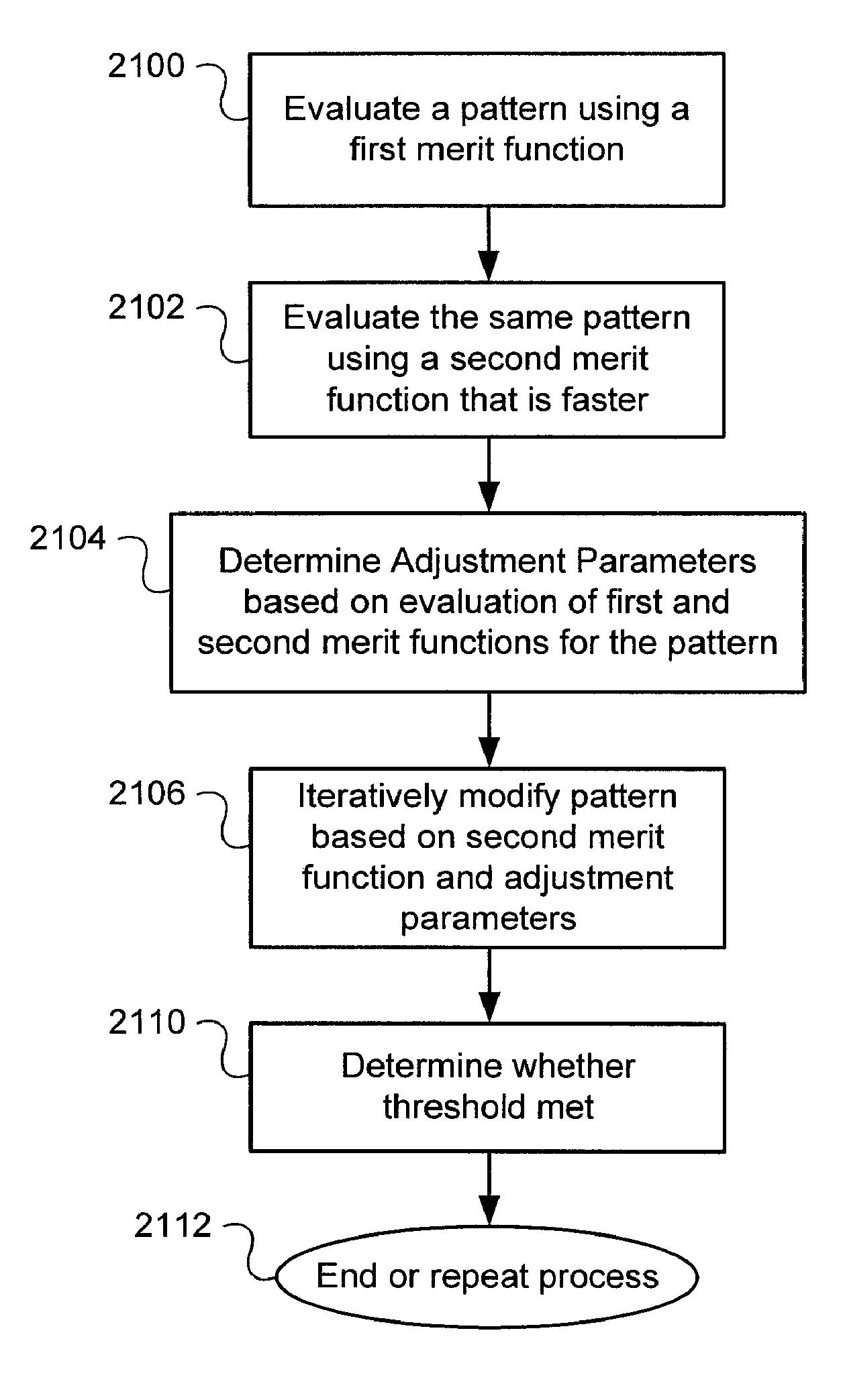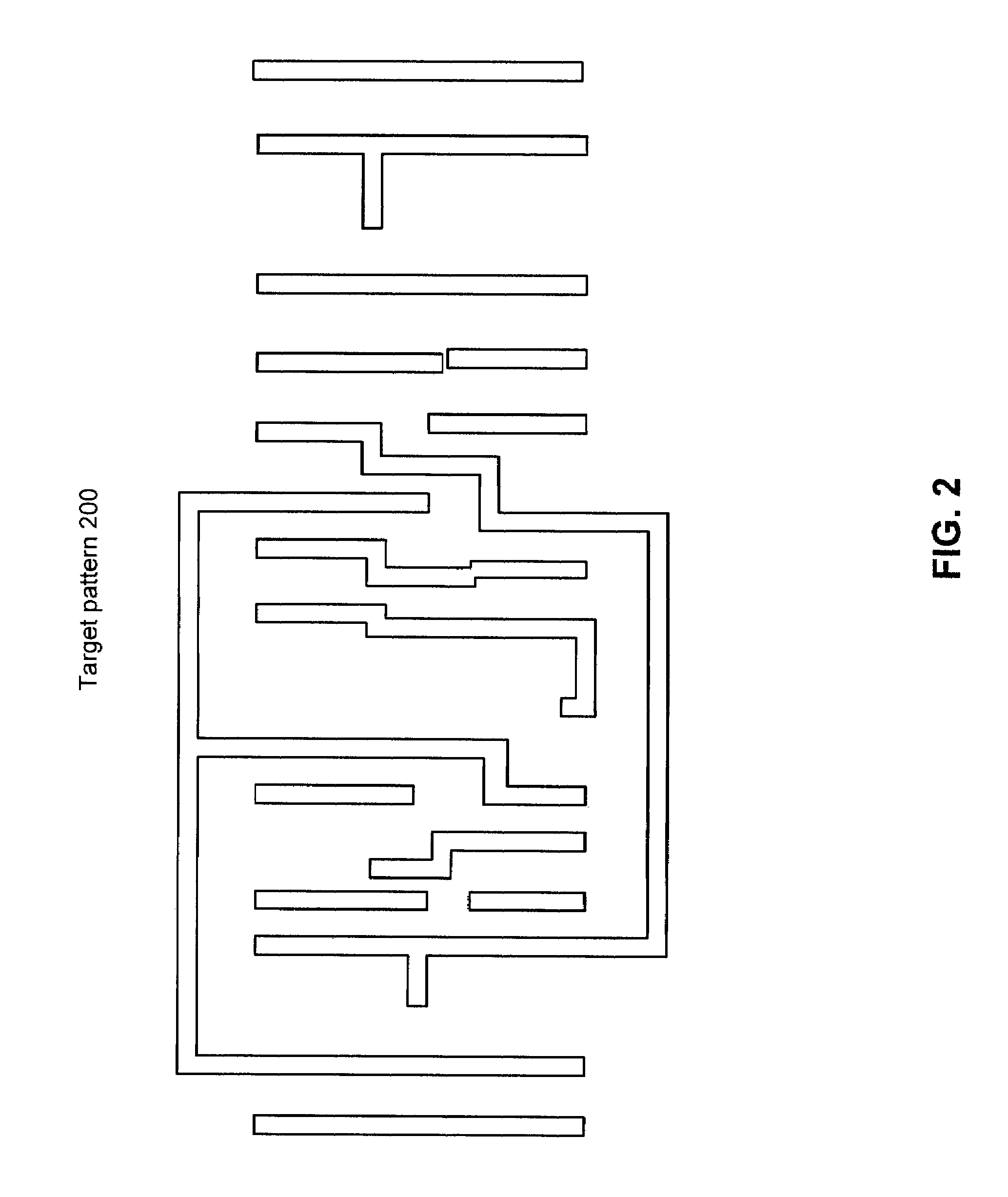System, masks, and methods for photomasks optimized with approximate and accurate merit functions
a merit function and mask technology, applied in the field of masks, can solve the problems of accompanied by unwanted distortions and artifacts, difficult or inability to compute the gradient of a function, and the difficulty of calculating the value of a merit function, etc., and achieve the effect of reducing the cost of production and maintenance, and improving the quality of production
- Summary
- Abstract
- Description
- Claims
- Application Information
AI Technical Summary
Benefits of technology
Problems solved by technology
Method used
Image
Examples
example masks
and Integrated Circuits
[0212]Photomasks may be manufactured using the mask pattern generated by the above systems and methods. Chrome, clear or phase shifted regions may be formed on a photomask in accordance with the mask pattern. For instance, FIGS. 15, 16, 17, 18B, C and D, 19B, C, D, E and F and 20B, C, D and E illustrate sample patterns that result from systems and methods according to example embodiments of the present invention. In these figures, the example patterns correspond to individual blocks of an overall photomask, although it will be understood that blocks may be combined into an overall pattern to be used in manufacturing a photomask.
[0213]FIG. 15 shows an example pattern for block 1500. This block is about one micron square. This block has a target pattern 1502 that is an isolated rectangle of 100 nm×454 nm. The process parameters (provided as inputs) include an illumination wavelength of 193 nm, a numerical aperture of 0.85, a point source of illumination, an atte...
PUM
| Property | Measurement | Unit |
|---|---|---|
| size | aaaaa | aaaaa |
| size | aaaaa | aaaaa |
| wavelength | aaaaa | aaaaa |
Abstract
Description
Claims
Application Information
 Login to View More
Login to View More - R&D
- Intellectual Property
- Life Sciences
- Materials
- Tech Scout
- Unparalleled Data Quality
- Higher Quality Content
- 60% Fewer Hallucinations
Browse by: Latest US Patents, China's latest patents, Technical Efficacy Thesaurus, Application Domain, Technology Topic, Popular Technical Reports.
© 2025 PatSnap. All rights reserved.Legal|Privacy policy|Modern Slavery Act Transparency Statement|Sitemap|About US| Contact US: help@patsnap.com



